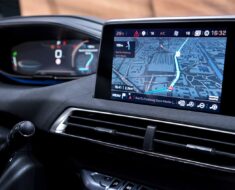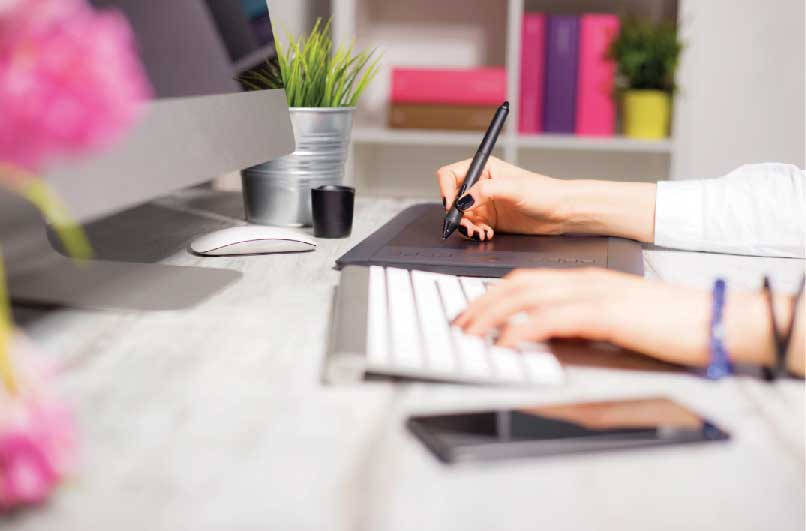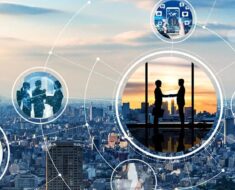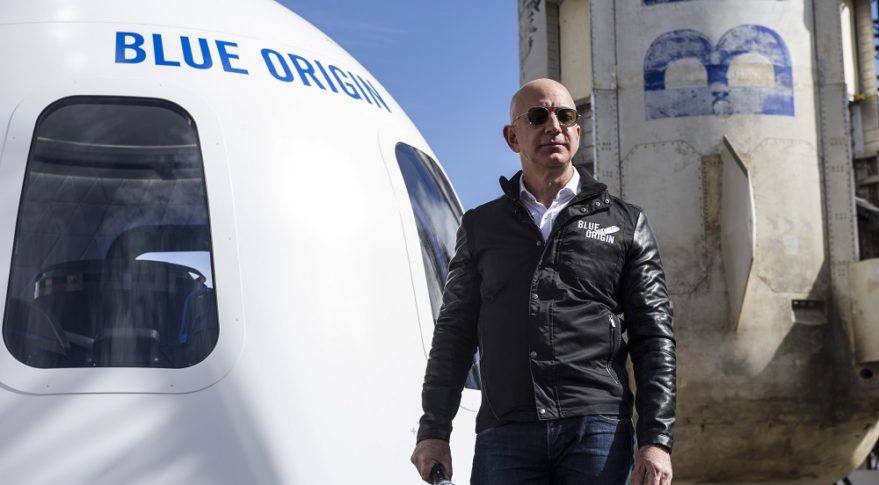Universal Design is a concept that, in a perfect world, would allow students with a disability to walk into a room and immediately have EQUAL ACCESS to all information. With Universal Design, assistive technology can be used so everyone can easily complete class lessons, including people with disabilities who use assistive technology.
The following accommodations are everyday examples of Universal Design: automatic sliding doors, large bathroom doors and stalls, adjustable tables, curb cuts, text messaging, motion lights, lever handles, and e-books. Each of these examples makes life easier for everyone, not just someone with a disability.
• Assistive Technology for the Deaf and Hard of Hearing
For the deaf or hard of hearing, a Sorenson service uses remote interpreters via videophone. Videophones are free with Sorenson service. People can be in one place and the interpreter can be in another state. Some schools have CART reports available for students who are deaf and hard of hearing. The CART reporter sits outside a class and listens through headphones to make an exact transcript of the lecture like a court reporter. FM systems are also available for the hearing impaired. FM systems will amplify sound from one room to another. One person uses a small device with a transmitter and the other person uses a receiver. The person with the receiver can hear what the other person is saying as if they were next to each other. Assistive technology, such as FM systems, should be available to anyone visiting a museum or enjoying a performance in an auditorium or cinema.
• Braille/Tactile Diagrams
For someone who is blind, Braille technology is available on personal computers called PacMates that allow people to take their own notes using a Braille keyboard. Tactile diagrams for science are also available for human anatomy models, cross sections of the head, brain, nose, mouth, throat, respiratory tract, heart, digestive system, etc. Tactile maps are also available to anyone taking a geography class or studying. the world. Textbooks and tests at school can be produced in Braille for anyone requesting such services.
• Electronic text
Electronic text is now available through many non-academic and textbook publishers. Students who have disabilities may qualify for free copies of their textbooks from Recordings for the Blind and Dyslexic. The University of Virginia also has thousands of eBooks available to students. Kent State University has a non-commercial repository for eBook research and Project Gutenberg has many free eBooks. Google has more than 500,000 freely accessible e-books. Most publishers want a “proof of purchase” for college textbooks before providing an alternative e-text version of the book. The Kindle, The Nook, and Sony all have e-readers for thousands of books, but interested people should also look for text-to-speech software that allows them to listen to the book and read it.
• Physical Disabilities/Wheelchair Users
Wheelchair technology and ancillary systems are available for recreational activities such as bowling and soccer. Paralympic athletes compete in international Paralympic sporting events. In addition, special wheelchair carts with balloon tires are an option for touring the sandy beaches. For those with limited upper body movement, computer access can be achieved by large trackballs, a foot mouse, sip and puff devices, and a head-controlled mouse. Electric eyes can be provided that allow access and control of the computer through limited head movements and even blinking.
• Screen magnifiers
All personal computers have accessibility options, including a zoom feature for the visually impaired. You can find access in the Control Panel function of your PC. Zoom Text enlarges print for someone with low vision, and Zoom Text with Voice also includes a screen reader. Kurzweil and Freedom Scientific products also offer screen readers and magnifying glasses. Homemade magnifying glasses are not only good for students, but the technology will help those who do a good job with their hands. Her hands can be magnified on a monitor so people can see her knitting, writing, or small detail repairs. Camera technology also makes life more accessible for people with low vision. There are a variety of text magnifying products for someone with low vision that can be used on a desk, are portable, or can be worn on the head for someone with mobility disabilities. For example, Flipper uses a camera to project information from the classroom blackboard to a personal computer. Jordy is a product that is worn on the head. Small pocket electronic magnifiers are useful when it comes to reading fine print during shopping because the user can press a button and freeze the image to more easily access the enlarged print. These products are available on low vision websites. Also, you can get a microscope that is digital. The user hooks it up through a computer with special software. The computer then connects to a projector and enlarges the slide on a wall or table for everyone to see at once. There are math calculators available that use a projection to project onto the wall.
• Dictation to text
Someone with impaired vision or restricted hand movement can use a speech-to-text product such as Dragon Naturally Speaking, one of Nuance’s voice control products. Nuance’s voice controls will allow users to use voice commands to dictate emails to the Blackberry, add appointments and search the web. The Sony ICD-SX46 digital voice recorder can be used with Dragon NaturallySpeaking software. Tablet PCs have a sensitive screen designed to interact with a companion pen. You can use the pen directly on the screen like a mouse to select, drag, and open files, and it can be used instead of a keyboard to write notes by hand. Tablets must also have speech-to-text technology. The Nexus 1 smartphone also has a speech to text feature.
• Text to speech
Screen readers are also available for free or can be purchased, depending on the product. ReadPlease is a free screen reader for home use that reads text that has been cut and pasted into a computer’s screen reader. Blind students can use JAWS to hear everything on their computer. Zoom Text and Magic also have text readers built into their software. There are also electronic pens available that can read notes aloud, scan and store text, transfer information to PDAs, smartphones, and personal computers. Some of these pens can also translate English into other languages. Live Scribe’s Pulse Smartpen allows the user to record notes and then play back the written words by touching the notes. Notes can be saved to your computer and shared as Flash videos, PDF files, or audio files.
Regardless of the disability you face, today’s technology will help you overcome daily challenges.





